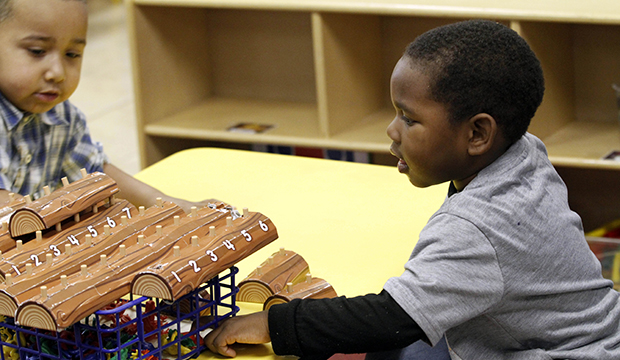The School-Readiness Gap and Preschool Benefits for Children of Color
< < Go Back
 The majority of children under age 1 in the United States today are children of color; that one simple fact means that our future will be very different from our current reality. Before we reach the end of this decade, more than half of all youth in this country will be of color. Today, Hispanics are 17 percent of the population, and African Americans make up another 13 percent. But by 2043, the United States’ population will be majority people of color. A large portion of this growth will come from the Hispanic community, which will grow to 28 percent of the U.S. population by 2050.
The majority of children under age 1 in the United States today are children of color; that one simple fact means that our future will be very different from our current reality. Before we reach the end of this decade, more than half of all youth in this country will be of color. Today, Hispanics are 17 percent of the population, and African Americans make up another 13 percent. But by 2043, the United States’ population will be majority people of color. A large portion of this growth will come from the Hispanic community, which will grow to 28 percent of the U.S. population by 2050.
We must prepare our children for the future by giving them the educational foundation that predicates so much of future success, and that starts with quality early childhood education. Access to high-quality preschool is central to school readiness, and school readiness can significantly impact everything from reading at grade level to graduating high school to being career ready later in life. Given that many children of color already face the challenge of poverty—42.5 percent of African American children under age 5 and 37.1 percent of Hispanic children under age 5—access to high-quality preschool could have positive, long-lasting, and compounding effects on future success. But recent data from 2011 show that more than half of African American children and 63 percent of Hispanic children ages 3 to 4 do not attend preschool.
Access to high-quality preschool is particularly needed for low-income children of color, who often start kindergarten behind their peers. By school entry, the gap between the wealthiest children and the poorest children is already pronounced. Children from low-income families are a year or more behind their more advantaged peers. By age 4, low-income children have heard 30 million fewer words than children from more-affluent families and have vocabularies that are half as extensive. The gaps that start at an early age only grow larger, and catching up becomes ever more difficult. By the first grade, for example, there is a full one-year reading gap between English language learners and native English speakers—a gap that increases to a two-year gap by the fifth-grade. This is especially troublesome given that as today’s children of color grow and mature, they will become America’s future workforce. African Americans and Hispanics combined will comprise 42 percent of the U.S. workforce in 2050, a vast increase from today, as the two groups now make up just 27 percent of the workforce.
More From The Center for American Progress:



